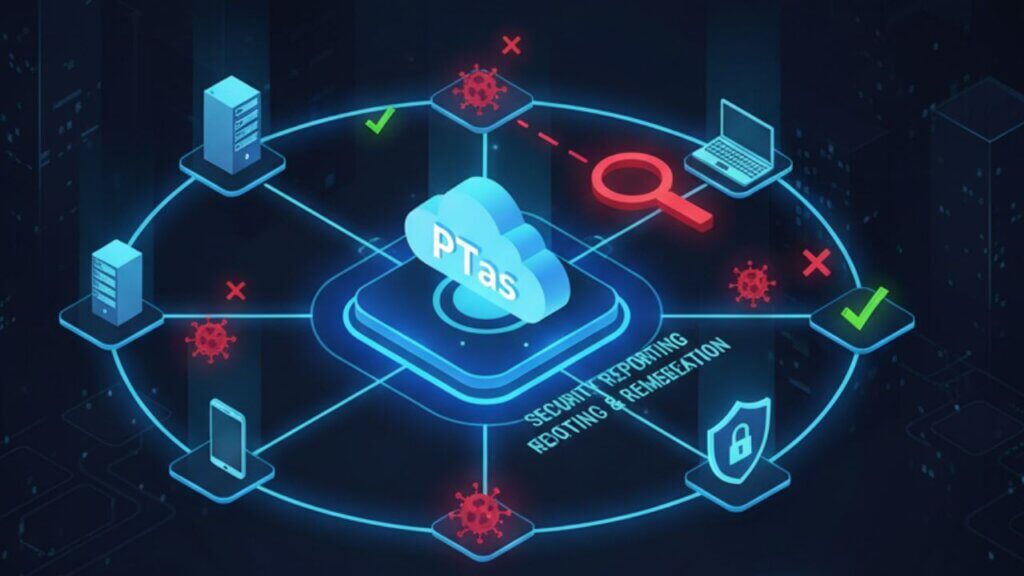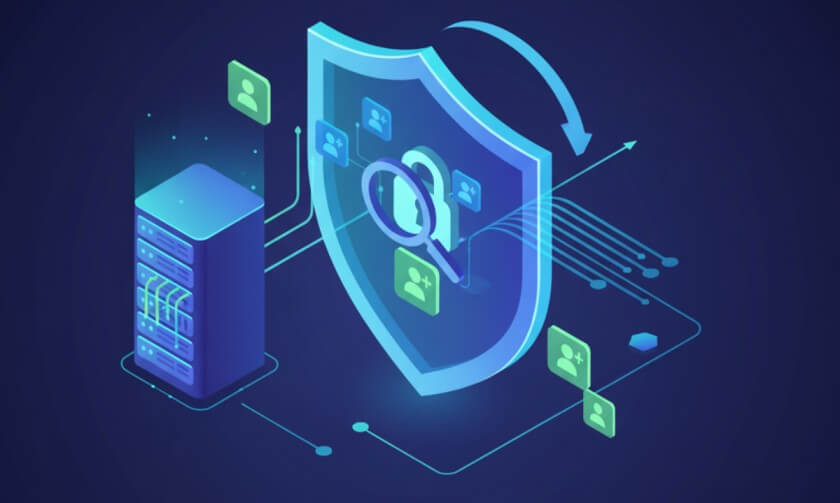Modern companies depend heavily on digital systems, cloud platforms, remote access tools, and interconnected applications to operate efficiently. While these technologies drive innovation, they also expand the potential attack surface for cybercriminals. To keep pace with these evolving threats, regular penetration testing has become a crucial part of maintaining a strong cybersecurity posture. It provides organizations with a continuous way to uncover vulnerabilities, validate defenses, and prevent potential breaches before they can cause real harm.
Table of Content
The Need for Ongoing Security Validation
Cyber threats have evolved from simple malware attacks to highly targeted campaigns that exploit both technical flaws and human behavior. Hackers today use automated tools and AI-driven reconnaissance to identify weak points faster than traditional security measures can patch them.
In this environment, a one-time penetration test offers only limited protection. A test conducted six or twelve months ago cannot account for recent software updates, infrastructure changes, or newly discovered vulnerabilities. Regular penetration testing ensures that your security assessments evolve as quickly as your systems and operations do.
Unlike a single audit that delivers a point-in-time report, regular testing gives continuous assurance. It helps organizations identify not only existing flaws but also understand how new technologies, integrations, or employee access changes affect their security posture over time.
What Makes Regular Penetration Testing Different
A penetration test involves simulating real-world cyberattacks under controlled conditions. Ethical hackers attempt to exploit systems, networks, and applications in the same way a malicious actor might without causing damage. The goal is to reveal weak points and provide actionable recommendations for improvement.
What separates regular penetration testing from an occasional engagement is consistency and context. Rather than treating it as an annual event to satisfy compliance requirements, leading companies integrate it as an ongoing process within their cybersecurity framework.
Regular testing schedules align with how often infrastructure changes, how critical the data is, and how exposed systems are to external threats. This approach allows businesses to maintain visibility, verify that previous vulnerabilities remain closed, and measure their progress over time.
Why One-Off Testing Is No Longer Enough
Digital transformation initiatives, frequent software deployments, and hybrid working models have reshaped how companies operate. Each of these factors introduces new risks: a misconfigured cloud service, a new API endpoint, or a recently onboarded vendor could all become attack vectors.
When penetration testing happens only once a year, organizations often miss the vulnerabilities that arise between assessments. Attackers, however, never stop scanning, probing, and adapting. They exploit the smallest gaps in configuration or code that appear after a test has been completed.
Regular penetration testing ensures your defenses are validated against these constantly emerging risks. It closes the window of opportunity between change and exploitation, helping your organization stay ahead rather than react after damage is done.
The Benefits of Regular Penetration Testing
Early Detection of Vulnerabilities
Consistent testing enables teams to identify weaknesses introduced by software updates, code changes, or third-party integrations before they can be exploited. This proactive discovery helps reduce the likelihood of a breach and the costs associated with emergency response.
Stronger Compliance Posture
Security regulations such as ISO 27001, PCI DSS, HIPAA, and SOC 2 emphasize the importance of periodic assessments. Regular penetration testing not only supports compliance but also provides clear, auditable proof of due diligence and continuous security improvement.
Improved Customer Confidence
Clients and partners increasingly ask how organizations protect their data. Demonstrating that your systems undergo regular penetration testing signals commitment to ongoing risk management and builds trust with stakeholders.
Continuous Security Maturity
Each test contributes to a cycle of testing, remediation, and verification. Over time, this reduces recurring issues, improves patch management, and strengthens coordination between security, IT, and development teams.
Building a Regular Testing Program
A well-designed penetration testing program should be structured, consistent, and aligned with business needs.
- Define Frequency: Companies handling sensitive or regulated data typically perform tests quarterly, while others may opt for bi-annual cycles. Frequency should match your rate of infrastructure change and threat exposure.
- Include Trigger-Based Assessments: In addition to a fixed schedule, run tests after major updates such as cloud migrations, system overhauls, or product launches.
- Cover All Layers: Scope should include networks, web and mobile applications, APIs, cloud configurations, and social engineering if relevant.
- Ensure Retesting: After fixes are implemented, revalidate that vulnerabilities have been effectively closed.
- Prioritize Communication: Reports should translate technical findings into business risk language so decision-makers understand the potential impact and can allocate resources effectively.
When built around these principles, regular penetration testing becomes a continuous improvement mechanism rather than a compliance checkbox.
Integrating Penetration Testing into a Broader Security Strategy
Penetration testing is most effective when it complements other defensive measures rather than existing in isolation.
Integration with vulnerability management ensures that automated scans highlight known issues while penetration testing explores real-world exploitability.
Linking testing insights with threat intelligence allows teams to simulate attack methods that mirror current adversarial trends.
Embedding testing outcomes into DevSecOps processes ensures new applications are built securely from the start.
SecureMyOrg’s perspective on Zero Trust architectures reinforces this approach: trust should always be verified. Regular penetration testing validates whether those trust boundaries hold up under active attack scenarios, ensuring that security assumptions remain valid as environments evolve.
The Cost of Neglecting Regular Testing
Choosing to skip or delay penetration testing can be a costly mistake. A single untested configuration or overlooked patch can serve as a foothold for attackers. Once a breach occurs, the resulting financial, operational, and reputational impact can far exceed the cost of prevention.
Beyond immediate recovery expenses, organizations risk regulatory penalties, loss of customer confidence, and long-term damage to their brand. Regular penetration testing acts as a safeguard against these outcomes providing an early warning system that identifies weaknesses before adversaries exploit them.
Getting the Most Value from Testing
To maximize the effectiveness of a regular testing program, work with qualified professionals who understand both technical and business risk. Certified ethical hackers (such as OSCP or CREST) can simulate advanced attack techniques and produce detailed, actionable reports.
Request reports that prioritize vulnerabilities based on impact, and ensure findings are tracked through to remediation. Collaboration between internal teams and testers is essential transparency and follow-up transform penetration testing from an external audit into a true partnership for improvement.
Over time, measure progress with metrics like reduced critical findings, faster response times, and improved compliance scores. These benchmarks demonstrate measurable returns on your security investment.
To keep your systems protected against real-world threats, SecureMyOrg’s Penetration Testing Services deliver hands-on testing and clear remediation guidance. Learn more about how our experts can help you achieve your security goals.
Conclusion:
Cyber threats evolve daily, and so should your defenses. Regular penetration testing is the mechanism that keeps your organization aligned with that reality. It verifies security controls, exposes blind spots, and ensures that progress in technology doesn’t come at the cost of safety.
Modern companies can no longer rely on a single annual assessment. They need a testing program that evolves with their infrastructure and risk profile, one that provides ongoing assurance rather than one-time reassurance.
By embedding regular penetration testing into your broader cybersecurity strategy, you create a living defense system that adapts, improves, and protects what matters most: your people, your data, and your reputation.
Want to Stay Ahead of Attackers? Read These Next:
- DevSecOps Best Practices: Integrating Security Early in Your CI/CD Pipeline
- 5 Cloud Misconfigurations That Lead to Data Breaches
- How Can Ethical Hacking Training Elevate Your Internal Cybersecurity?
- Top 5 Fileless Remote Access Trojans in 2025
- Top 5 IoT Remote Access Trojans Crippling Devices in 2025
- Top 5 Web-Based Remote Access Trojans That Are Dominating 2025
Why Businesses Trust SecureMyOrg for Comprehensive Network Security
At SecureMyOrg, we uncover and fix all possible security vulnerabilities of mobile and web, while providing solutions to mitigate risks. We are trusted by renowned companies like Yahoo, Gojek and Rippling, and with 100% client satisfaction, you’re in safe hands!







Some of the things people reach out to us for –
- Building their cybersecurity program from scratch – setting up cloud security using cost-effective tools, SIEM for alert monitoring, building policies for the company
- Vulnerability Assessment and Penetration Testing ( VAPT ) – We have certified professionals, with certifications like OSCP, CREST – CPSA & CRT, CKA and CKS
- DevSecOps consulting
- Red Teaming activity
- Regular security audits, before product release
- Full time security engineers.







